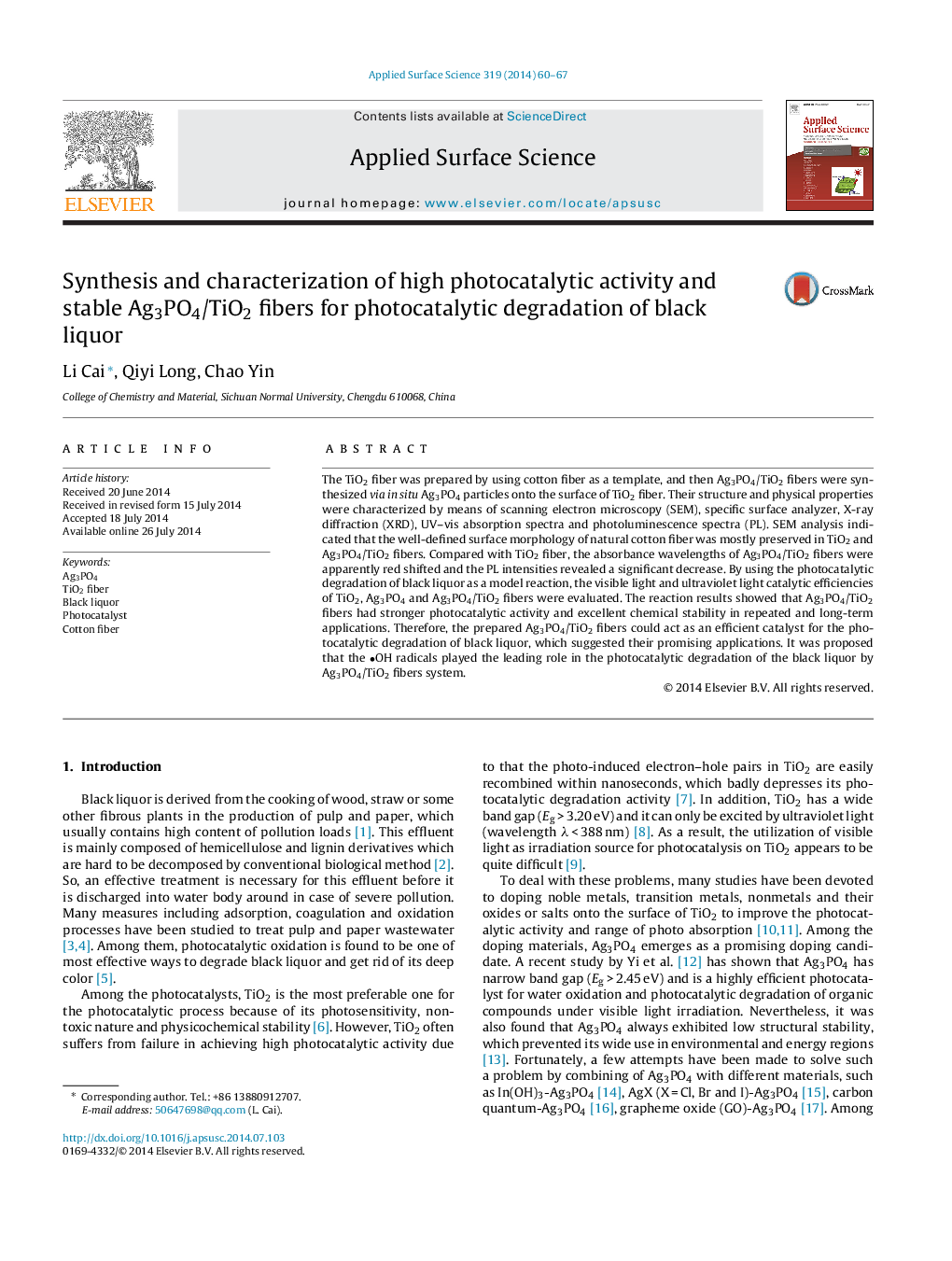| Article ID | Journal | Published Year | Pages | File Type |
|---|---|---|---|---|
| 5360563 | Applied Surface Science | 2014 | 8 Pages |
Abstract
The TiO2 fiber was prepared by using cotton fiber as a template, and then Ag3PO4/TiO2 fibers were synthesized via in situ Ag3PO4 particles onto the surface of TiO2 fiber. Their structure and physical properties were characterized by means of scanning electron microscopy (SEM), specific surface analyzer, X-ray diffraction (XRD), UV-vis absorption spectra and photoluminescence spectra (PL). SEM analysis indicated that the well-defined surface morphology of natural cotton fiber was mostly preserved in TiO2 and Ag3PO4/TiO2 fibers. Compared with TiO2 fiber, the absorbance wavelengths of Ag3PO4/TiO2 fibers were apparently red shifted and the PL intensities revealed a significant decrease. By using the photocatalytic degradation of black liquor as a model reaction, the visible light and ultraviolet light catalytic efficiencies of TiO2, Ag3PO4 and Ag3PO4/TiO2 fibers were evaluated. The reaction results showed that Ag3PO4/TiO2 fibers had stronger photocatalytic activity and excellent chemical stability in repeated and long-term applications. Therefore, the prepared Ag3PO4/TiO2 fibers could act as an efficient catalyst for the photocatalytic degradation of black liquor, which suggested their promising applications. It was proposed that the
- OH radicals played the leading role in the photocatalytic degradation of the black liquor by Ag3PO4/TiO2 fibers system.
- OH radicals played the leading role in the photocatalytic degradation of the black liquor by Ag3PO4/TiO2 fibers system.
Related Topics
Physical Sciences and Engineering
Chemistry
Physical and Theoretical Chemistry
Authors
Li Cai, Qiyi Long, Chao Yin,
